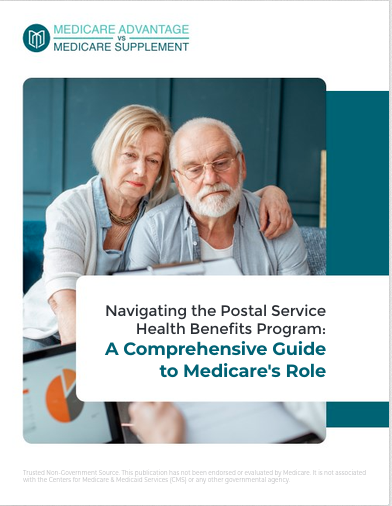Key Takeaways:
-
Medicare Advantage and Medigap plans each offer unique benefits, making the right choice dependent on your healthcare needs and budget in 2025.
-
Understanding the differences between these options can help you secure comprehensive coverage and peace of mind.
Decoding Your Medicare Choices
Navigating Medicare can feel overwhelming, especially when deciding between Medicare Advantage (Part C) and Medigap (Medicare Supplement Insurance). These plans serve different purposes but are often confused. Let’s break them down to help you choose the best fit for your healthcare needs in 2025.
What Is Medicare Advantage?
Medicare Advantage plans are all-in-one alternatives to Original Medicare (Parts A and B). Offered by private insurance companies approved by Medicare, these plans bundle hospital, medical, and often prescription drug coverage (Part D). Many also include extra benefits like vision, dental, and hearing care.
Key points to consider:
-
Comprehensive Coverage: Medicare Advantage plans often package multiple services into one plan, which can simplify your healthcare management.
-
Network Restrictions: Most plans require you to use a network of doctors and hospitals. Out-of-network care may not be covered unless it’s an emergency.
-
Cost Structure: Copayments, coinsurance, and out-of-pocket maximums vary widely, so carefully reviewing plan details is essential.
What Is Medigap?
Medigap policies supplement Original Medicare by covering out-of-pocket expenses such as deductibles, copayments, and coinsurance. Unlike Medicare Advantage, Medigap plans don’t provide additional benefits like dental or vision care.
Key points to consider:
-
Predictable Costs: Medigap plans help minimize unexpected expenses, offering peace of mind for individuals who prefer financial predictability.
-
Flexibility: You can see any doctor or specialist who accepts Medicare, making it an ideal choice for those who value provider freedom.
-
Separate Drug Coverage: You’ll need a standalone Part D plan for prescription drugs, adding another layer of coverage to consider.
Key Differences Between Medicare Advantage and Medigap
Coverage
Medicare Advantage offers bundled coverage, often including Part D and additional benefits. Medigap focuses on filling the gaps in Original Medicare, like coinsurance and deductibles. However, it does not include prescription drug coverage.
Provider Networks
Medicare Advantage plans typically require you to use in-network providers, limiting your options. In contrast, Medigap plans allow you to visit any Medicare-accepting doctor or facility without network restrictions.
Cost Structure
-
Medicare Advantage: Premiums are often lower, but costs like copayments and coinsurance can add up quickly, especially if you require frequent care.
-
Medigap: Premiums are higher but provide consistent coverage for out-of-pocket expenses, reducing surprise costs and offering greater financial stability.
Portability
If you travel often or split time between multiple residences, Medigap may be a better choice, as it’s accepted nationwide. Medicare Advantage plans, however, may not cover non-emergency care outside their network.
Comparing Costs in 2025
Premiums
-
Medicare Advantage: Premiums vary widely based on the plan’s benefits and coverage area, making it crucial to compare options in your location.
-
Medigap: Monthly premiums depend on the type of plan you choose, your age, and your location. These costs are generally higher than Medicare Advantage premiums but offer predictable expenses.
Deductibles
Original Medicare deductibles for 2025 include $1,676 for Part A (hospital stays) and $257 for Part B (outpatient services). Medigap plans often cover these expenses, while Medicare Advantage plans may leave you responsible for a portion of these costs.
Out-of-Pocket Costs
Medicare Advantage plans have an annual out-of-pocket limit, which resets each year. In contrast, Medigap policies significantly reduce or eliminate out-of-pocket costs, providing more financial predictability and stability for beneficiaries.
Enrollment Timelines
Medicare Advantage
You can enroll in a Medicare Advantage plan during specific periods:
-
Initial Enrollment Period (IEP): 7 months surrounding your 65th birthday, which includes the 3 months before, the month of, and the 3 months after you turn 65.
-
Annual Enrollment Period (AEP): October 15 to December 7, for making changes effective January 1 of the following year.
-
Medicare Advantage Open Enrollment Period: January 1 to March 31, to switch plans or revert to Original Medicare.
Medigap
The best time to buy a Medigap policy is during your Medigap Open Enrollment Period, which lasts for six months starting the month you’re 65 and enrolled in Part B. During this period, insurers cannot deny coverage or charge higher premiums due to pre-existing conditions.
Suitability: Who Should Choose What?
Medicare Advantage Might Suit You If:
-
You prefer lower monthly premiums and are comfortable managing out-of-pocket costs as they arise.
-
You’re okay with using a network of providers and don’t require frequent care outside your local area.
-
You’re seeking bundled coverage with extra benefits like vision or dental care.
Medigap Might Suit You If:
-
You want predictable costs and fewer out-of-pocket surprises, especially if you anticipate needing frequent care.
-
You value the freedom to choose any Medicare-accepting provider without worrying about networks.
-
You travel frequently or live in multiple locations throughout the year, requiring coverage that follows you.
Questions to Ask Yourself
-
What’s my budget for monthly premiums and out-of-pocket costs?
-
Do I need additional benefits like dental or vision care?
-
How often do I travel or seek care outside my local area?
-
Am I okay with using a provider network, or do I prefer flexibility in choosing providers?
Coordinating Coverage with Prescription Drugs
Medicare Advantage
Most Medicare Advantage plans include Part D prescription drug coverage. However, it’s essential to verify the formulary (list of covered drugs) to ensure your medications are included and affordable.
Medigap
Medigap policies don’t cover prescription drugs, so you’ll need to purchase a standalone Part D plan. This approach gives you more control over your drug coverage but requires careful coordination to avoid gaps.
What’s New for 2025?
Out-of-Pocket Drug Cost Cap
Starting in 2025, Medicare Part D introduces a $2,000 cap on out-of-pocket drug costs. This change provides significant financial relief for beneficiaries with high medication expenses, regardless of whether they choose Medicare Advantage or Medigap.
Payment Flexibility
The new Medicare Prescription Payment Plan allows you to spread out drug costs over monthly installments, making essential medications more affordable without large upfront expenses.
Adjustments to Plan Offerings
While the number of Medicare Advantage plans is slightly decreasing, Special Needs Plans (SNPs) are increasing, offering targeted care for those with specific health conditions. Beneficiaries should explore these specialized plans if they meet eligibility requirements.
Choosing the Right Plan
Selecting between Medicare Advantage and Medigap requires weighing your healthcare needs, financial situation, and personal preferences. A careful review of plan details during enrollment periods ensures you make an informed choice that supports your long-term health goals.
Steps to Take
-
Compare plan options in your area using available tools or speaking with a Medicare counselor.
-
Review the Annual Notice of Change (ANOC) if you’re already enrolled in a plan, paying close attention to any changes in premiums, benefits, or coverage.
-
Confirm your medications are covered under Part D and that your preferred providers are in-network (if applicable).
-
Consider how your healthcare needs may change in the future and plan accordingly.
How to Stay Informed
Medicare’s Open Enrollment Period is the perfect time to evaluate your options for the upcoming year. Pay attention to changes in premiums, deductibles, and benefits. Staying proactive ensures you’re never caught off guard and always have a plan that fits your needs.
Finding the Perfect Fit for Your Healthcare Needs
Choosing between Medicare Advantage and Medigap in 2025 boils down to understanding your priorities and evaluating the trade-offs. Whether you’re drawn to the bundled convenience of Medicare Advantage or the predictable costs and flexibility of Medigap, the right plan is the one that aligns with your health, lifestyle, and financial goals.









